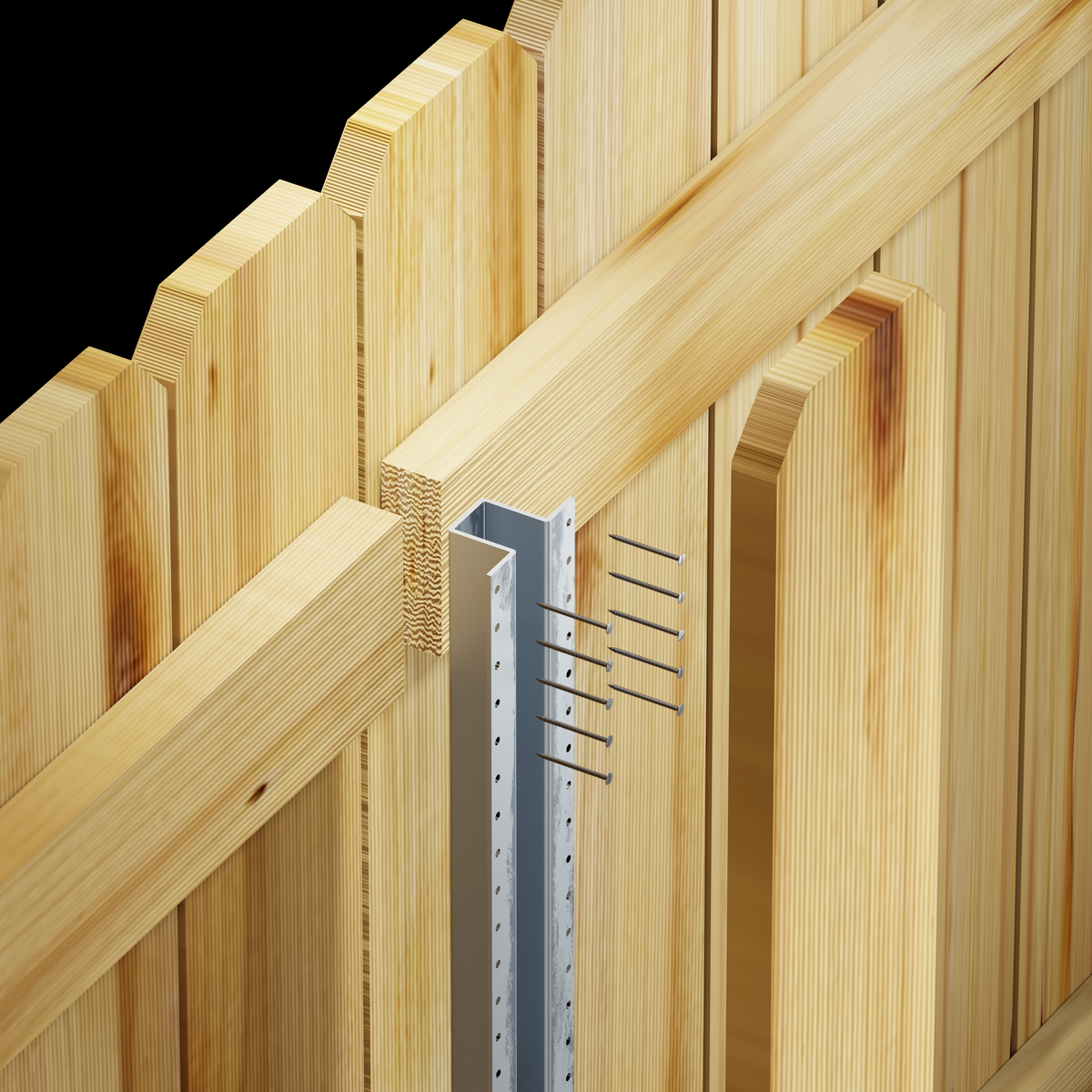
The story is painfully familiar to most homeowners. A fence that started perfectly straight begins to show subtle signs of failure within just a few years. First, the gate starts catching as you open it. Then, almost imperceptibly, posts begin to lean. What was once a straight fence line develops a subtle wave pattern. Before long, what started as minor annoyances become structural issues that can't be ignored.
We founded Solid after seeing this pattern repeat itself countless times across decades of fence installations. While there are many reasons why steel is a superior structural material to wood, there's one fundamental problem that makes wood posts eventually fail: moisture.
To understand why fences fail, and why we exclusively use steel, we need to understand what happens when wood meets moisture.
The Problem with Wood
At its core, wood is like a bundle of straws - its cellular structure is designed to move water from roots to leaves. Even after being cut and processed, this fundamental structure remains. When wood meets moisture:
- It absorbs water like a sponge through its cell structure
- The cells expand and contract with moisture levels
- This constant expansion and contraction weakens the wood's structure
- Moisture creates the perfect environment for fungi and bacteria
- These organisms feed on the wood, breaking down its cellular structure
- Once this breakdown begins, it's impossible to reverse
This natural process is actually vital for fallen trees in forests - it's how nature recycles wood back into soil. But it's exactly what we don't want happening to our fence posts.
In ground contact, this process accelerates because:
- Posts sit in constant moisture
- The soil contains active decay organisms
- Ground moisture wicks upward through the wood
- The concrete footer often traps moisture against the post
- Seasonal freeze-thaw cycles drive moisture deeper into the wood
"But what about pressure-treated lumber?"
While pressure treatment certainly helps, it's ultimately a delaying tactic rather than a solution. Here's what happens over time:
- Initial Protection (Years 0-2)
- Pressure treatment actively guards against moisture
- Wood appears to be winning the battle
- Post remains structurally sound
- The Beginning (Years 2-5)
- Treatment begins breaking down at ground level
- Microscopic decay takes hold
- Wood starts its inevitable absorption cycle
- The Turning Point (Years 5-7)
- Ground-level decay becomes established
- Moisture wicking accelerates
- First signs of gate misalignment appear
- Visible Decline (Years 7-10)
- Post base softening becomes detectable
- Gates begin dragging
- Structural integrity compromises begin
- Alignment issues become visible
While proper installation techniques can extend a wood post's life, these methods often cost more than switching to steel:
- Gravel drainage beds
- Enhanced concrete footings
- Multi-layer post protection
- Specialized drainage systems
Even with these expensive additions, we're still just buying time. The fundamental problem remains: wood is organic material in constant contact with moisture.
Why Steel Changes Everything
Steel's advantage isn't just about being stronger - it's about being impervious to moisture. This isn't a strength competition; it's about choosing a material that's physically incapable of rotting.
- No organic material = nothing to decay
- No moisture absorption = no internal weakening
- No wicking action = no structural compromise
- No biological breakdown = maintained structural integrity
The True Cost Analysis
Standard Wood Post Installation:
- Initial cost: Lower
- Required maintenance: Regular
- Expected lifespan: 7-15 years
- Replacement: Inevitable
Premium Wood Post Installation:
- Initial cost: Higher than steel
- Required maintenance: Moderate
- Expected lifespan: 15-20 years
- Replacement: Still inevitable
Steel Post System:
- Initial cost: Moderate
- Required maintenance: Minimal
- Expected lifespan: 40+ years
- Replacement: Not due to ground contact failure
The Solid Solution
At Solid, we've built our entire fence system around this simple truth. Our steel posts aren't just stronger - they're immune to the one force that makes every wood post ultimately fail. Each installation includes:
- Industrial-grade steel posts that cannot rot
- 100-150 pounds of concrete anchoring
- Precise installation specifications
- Premium cedar pickets and rails
- 10-year structural warranty
We don't fight physics - we work with it. While the cedar components of your fence will eventually need renewal, your posts will remain straight, strong, and structurally sound.
Build it once. Build it right. Build it to last.

